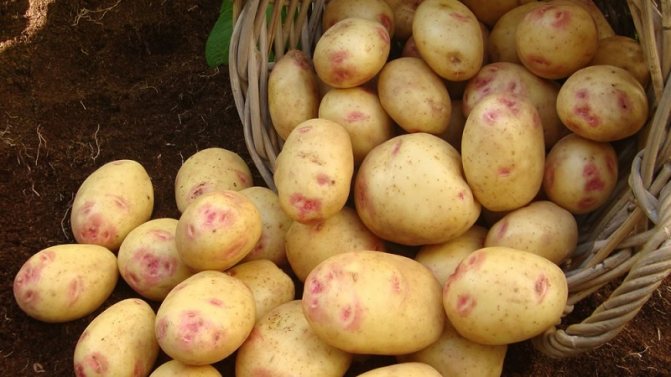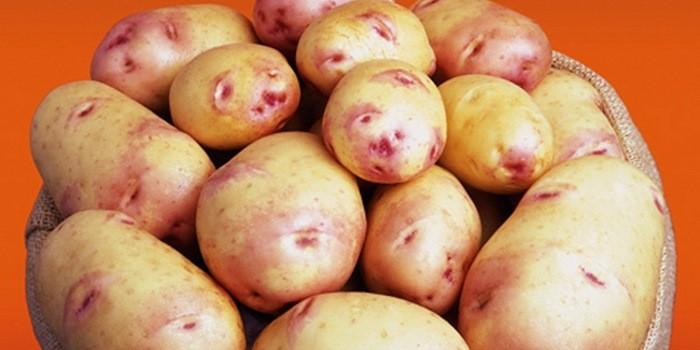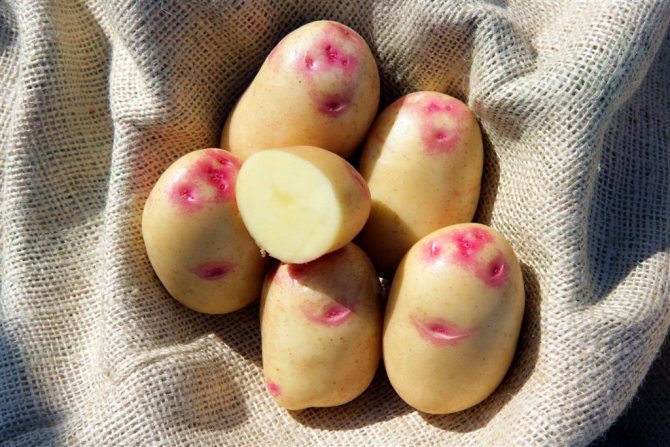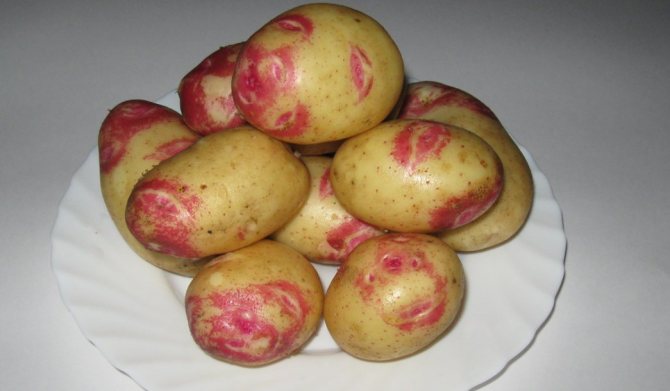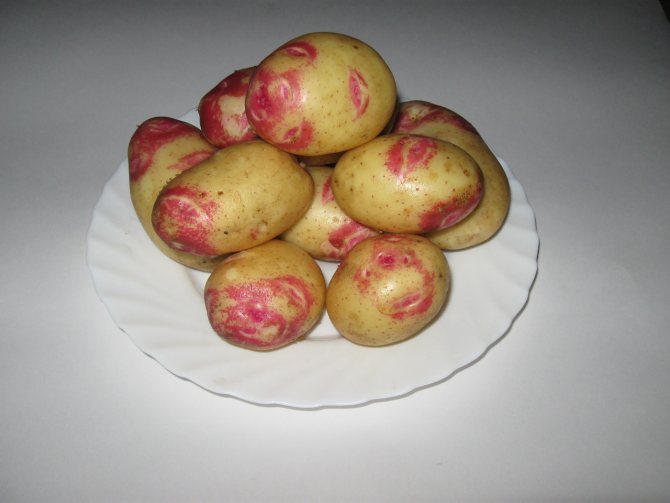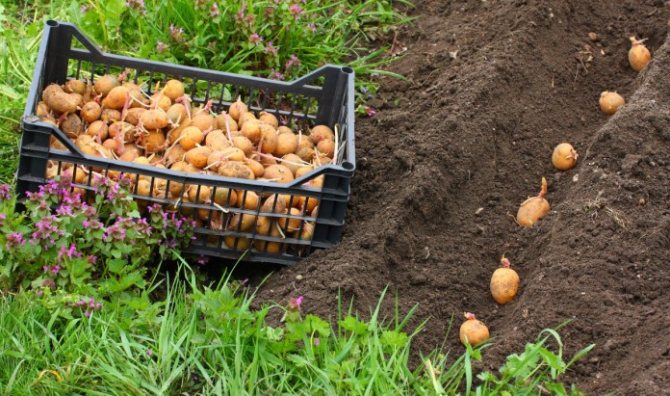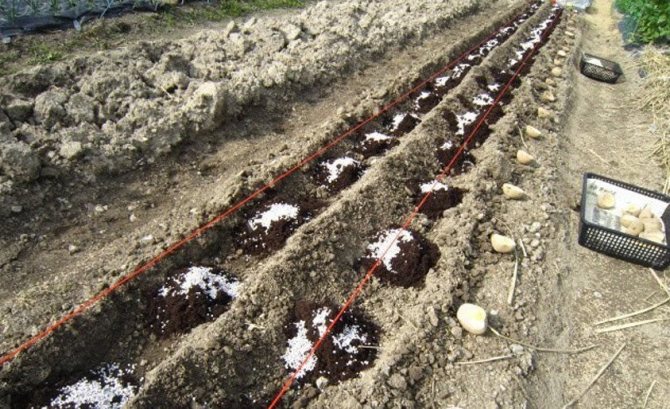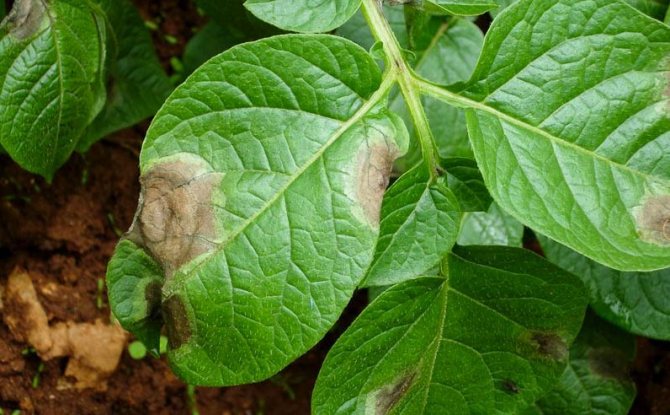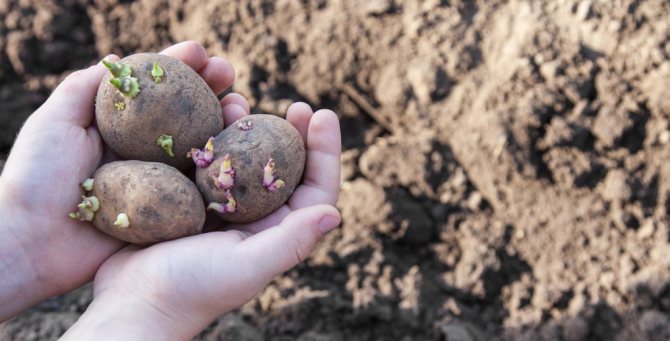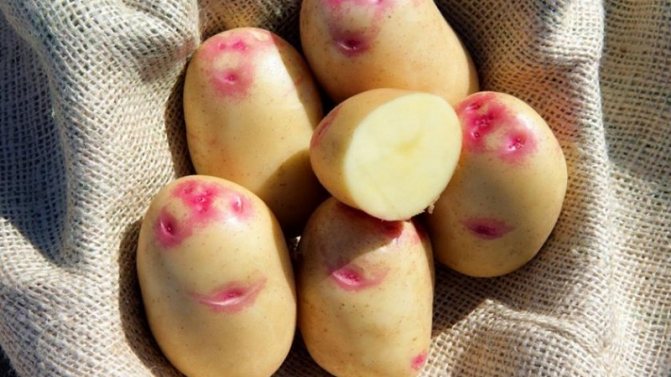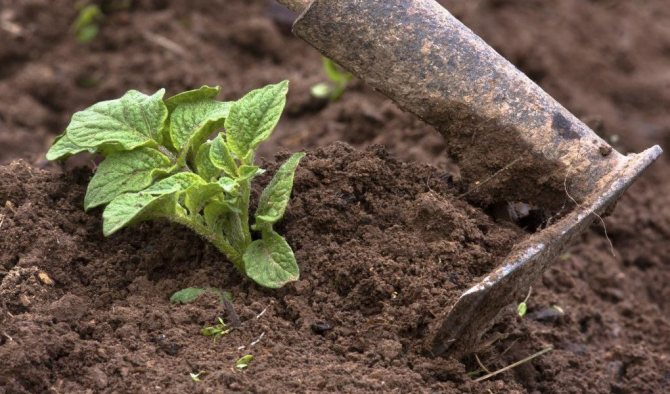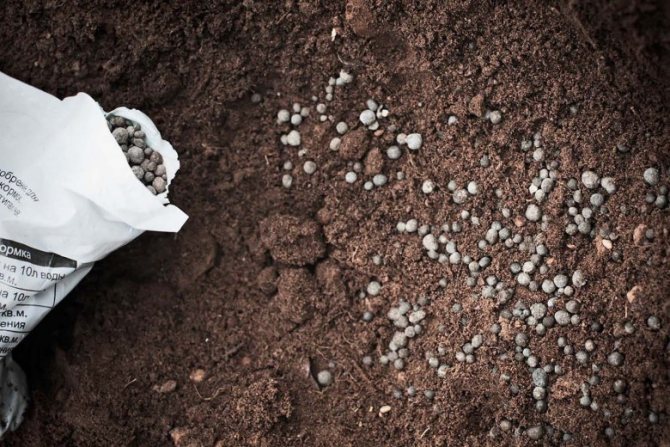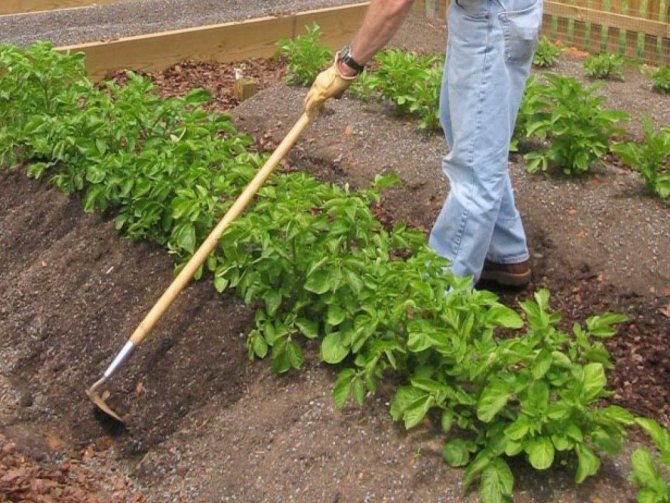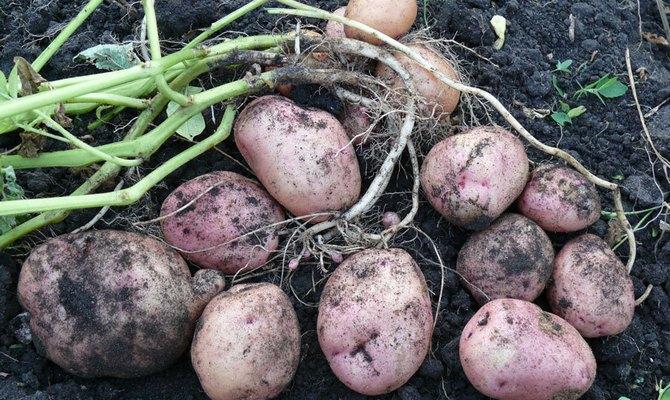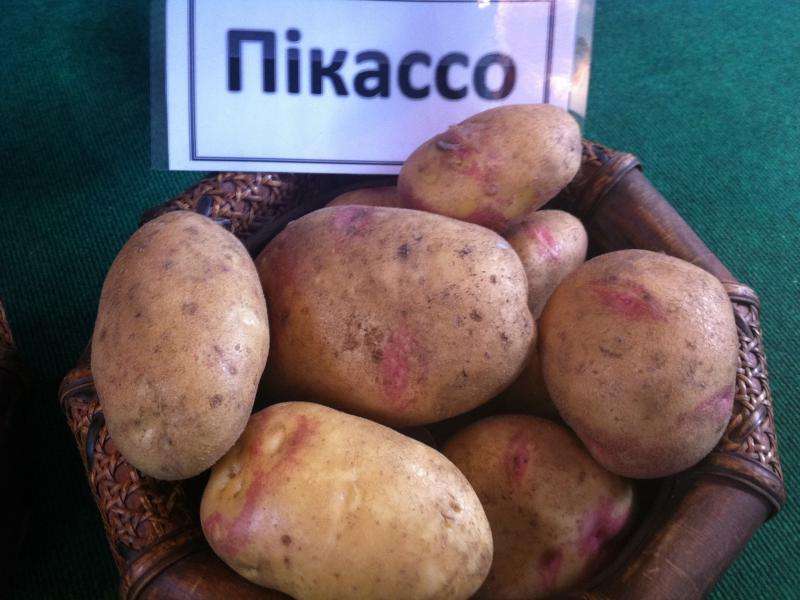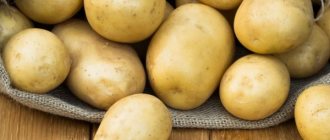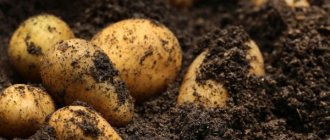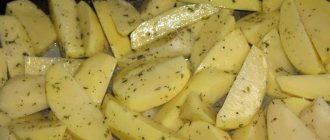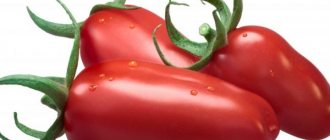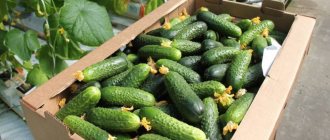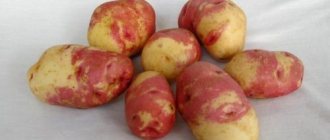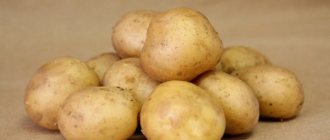Quite often, on store shelves, customers see potatoes of an incomprehensible variety, so they do not dare to take it. In order not to be disappointed, it is important to know the characteristics of the tubers. Some may contain too much starch and boil during heat treatment. Others are late varieties and should be purchased in the spring. It is difficult to determine all these characteristics by mere appearance.
But the Picasso potato variety cannot be confused with any other due to one important distinctive feature - bright eyes on a light peel. This is a favorite potato of many housewives, which has a lot of positive qualities. Let's take a closer look at them.
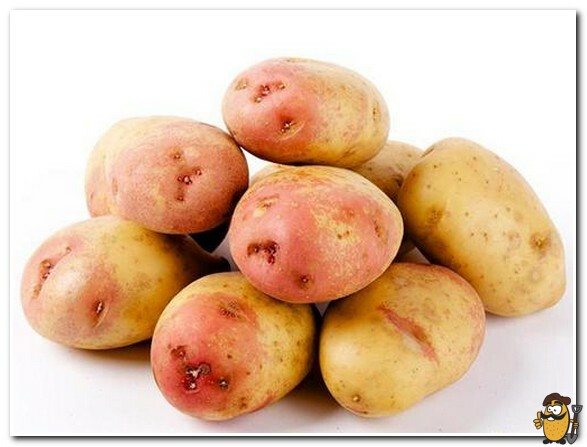
Features of the variety
Picasso is the result of the work of Dutch breeders. It was entered into the State Register of the Russian Federation back in 1995, so it cannot be called a novelty. This is a late-ripening table potato, fully ripening 110-130 days after planting.
The variety has an unsurpassed taste, high yield and resistance to many potato diseases. One bush gives up to 20 tubers, the average weight of which is 80-140 g. The overall yield is 250-400 c / ha. Under favorable conditions, 500 c / ha can be harvested.
Below is a comparative table of yields with other common varieties.
| Variety | Yield |
| Rosara | 350-400 c / ha |
| Impala | 180-360 c / ha |
| Luck | 420-260 c / ha |
| Bullfinch | 180-270 c / ha |
| Kamensky | up to 500 c / ha |
| Molly | 390-450 c / ha |
| Latona | up to 450 c / ha |
Picasso potatoes retain their presentation throughout the entire storage period. Keeping quality is satisfactory - 93-95%.
Advantages and disadvantages
Table. The main advantages and disadvantages of Picasso potatoes
| pros | Minuses |
|
|
Picasso (potatoes): characteristic of appearance
This variety has tall, upright bushes with thick stems. The green mass is very lush and dense, so the bushes, as a rule, begin to creep long before harvest. The leaf plate is wide, slightly wavy, almost never curled. When flowering begins, large flowers with delicate whitish petals open on the stems.
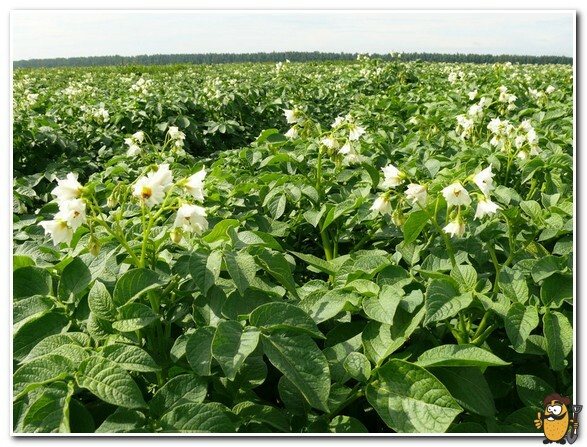

Description of tubers:
- slightly oval shape;
- light yellow thin peel;
- eyes are deep pink with large bright spots;
- the pulp has a pleasant creamy shade;
- the percentage of starch is 10-12%;
- taste meets all requirements;
- the average number of tubers in one bush is 16-20 pieces.
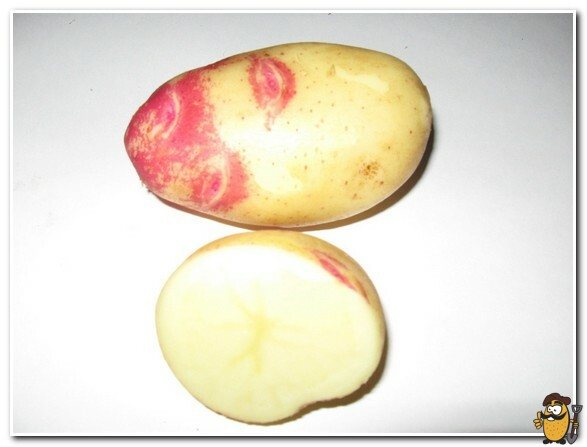

Comparative table with quantitative characteristics of other varieties
| Variety | Number of tubers |
| Typhoon | 6-10 pieces |
| Romano | 8-9 pieces |
| Colombo | up to 15 pieces |
| Tiras | 9-13 pieces |
| Gypsy | 8-14 pieces |
| Vega | 8-10 pieces |
| Jelly | up to 16 pieces |
As you can see, Picasso is one of the most productive varieties, which is why many summer residents like to grow it on their plots.
Seed potato preparation
The description and characteristics of the culture confirms that the Picasso potato variety is a super elite that can be grown without prior sprouting of tubers. It is difficult or even impossible to carry out such procedures on an industrial scale. But in private farms it is easy to select seed material and put it in boxes for sprouting eyes.
Tubers of the same size, but small, are selected. The rule of experienced gardeners says that small tubers will give a large harvest. The Picasso potato variety can be exposed to light and the tubers can be allowed to accumulate solanine. This substance is a poisonous glycoalkaloid that can kill small insects such as the Colorado potato beetle while still in the soil. Before planting, tubers are often soaked for half an hour in Prestige solution.
Picasso (potatoes): description of the characteristics of the variety
Why are these potatoes so popular among amateur gardeners and professional potato growers? The answer is simple: it has a lot of advantages.


Pros of the variety:
- excellent presentation.
- fairly high keeping rates.
- expressive potato aroma and excellent taste.
- high resistance to many diseases, immunity to scab, nematodes and potato cancer.
- unpretentiousness to temperature and climatic conditions.
- excellent yield indicators.
- good long-distance transportation tolerance.
Minus Picasso only one, but it's essential. Unfortunately, the variety has no immunity to late blight. This is a very insidious disease that affects not only stems with leaves, but also tubers. In order not to risk it, it is recommended to treat the seed material with Maxim, Prestige or Fitosporin-M before planting.
Diseases and pests
Recently, insects and viruses infecting potatoes have developed excellent immunity to chemistry. Therefore, the natural resistance (immunity) of the potato itself is a very important factor when choosing a variety. After all, potatoes, which will not cope well with cancer, will be very popular with Colorado, and will quickly disappear from the garden beds.
We recommend to read: "Tuleyevsky Potatoes"
Picasso has excellent resistance. He opposes:
- Scab.
- Golden nematode.
- Fusarium.
But, like most varieties, it does not have enough strength to fight late blight. Moreover, if a variety begins to suffer from this disease, then the yield is often reduced by 50-60%. The main sign of the presence of the disease is the appearance of a white bloom on the back of the leaf tops.
Further, the disease spreads to the tuber. Dark spots appear on it. And all would be fine, but the virus is infectious and infects neighboring tubers through the root system.


To prevent this from happening, you must first protect Picasso from late blight. For this, special feeding is used, hilling is performed.
If, nevertheless, the virus attacked the tubers, then you need to find diseased leaves and cut them off before the infection begins to spread.
Growing features
Late-ripening varieties are better planted a little earlier than mid-ripening and early-ripening ones. Early planting is necessary in order for the tubers to form and mature. Recall that the full growing season of Picasso is 125-130 days, so late April or early May is the ideal time to plant. At the same time, we must not forget that the earth at the time of planting planting material in the ground should warm up to + 7- + 10 degrees.


Another important condition for a good harvest in late-maturing varieties is the preliminary germination of seed tubers. You need to germinate 2-3 weeks before planting. Planting material is taken from storage in early April, laid out in 1 layer in a warm, slightly lit room. In 15-20 days, small plump sprouts will appear on the potatoes.
Before germination, you can apply special preparations to stimulate growth, then the sprouts on the tubers will germinate faster. For these purposes, Epin or Zircon are suitable. Recommendations for their use are clearly described in the instructions on the sachets with the substance.
Picasso is not particularly picky about the characteristics of the soil, but still, preference should be given to loam and sandy loam soils. On such lands, the yield increases significantly compared to cultivation on heavy clay soils or poor sandy soils. Do not plant Picasso in the part of the plot where tomatoes, beets or eggplants were previously grown. The best precursors for this potato are legumes, grains, greens, cabbage, carrots and peppers.


When planting, it is worth considering the fact that the bushes of this variety are large, thick and spreading, so the scheme must be correctly calculated. The recommended distance between bushes is 50 cm, between rows - from 65 to 70 cm. With this planting, the root system will grow well, form a larger number of tubers, which will have enough space for full development and growth.
Benefit
First of all, Picasso potatoes, the photo of which are presented in the article, is eaten, since it contains many useful components for the human body. The basis of Picasso potatoes, like any other similar product, contains a lot of ascorbic acid, as well as many other useful trace elements. With moderate consumption of Picasso potatoes, a person can reduce the content of bad cholesterol in the blood.


But useful properties are found not only in potato pulp, do not forget about the vegetable peel, which is also rich in useful substances. Therefore, it is useful for everyone to cook and eat potatoes in their uniforms at least occasionally. Raw and boiled potatoes are also used for medical purposes and cosmetology.
Proper care after planting
When the sprouts break through the surface of the soil, you can begin to cultivate the land. Care consists of the following activities:
- loosening;
- weeding;
- hilling;
- watering;
- fertilization;
- pest control.
Loosening and weeding are essential procedures that will have to be repeated. The first time the earth is loosened with a rake after the young plants reach 5 cm in height. As it grows, weeds will begin to actively appear. So that they do not take nutrients from the culture, they must be removed entirely, along with the roots. In addition to getting rid of weeds, loosening and weeding saturates the earth with oxygen, allowing moisture to penetrate directly to the root system.


Usually, rainwater is enough for potatoes to grow well, but in some years dry periods occur when hot and dry weather can negatively affect the development of young plants. On such days, they need additional watering directly under the bushes. Also, potatoes respond well to watering during the flowering period. It is at this time that nodules begin to form on the rhizomes, and moisture is needed in order for them to be fully saturated with nutrients. When this condition is met, the tubers will grow of impressive size, weighing up to 150 g each.
Hilling is another important activity when growing a crop. It is necessary to start forming piles under bushes with tops at the moment when they reach a height of 15-20 cm. Thanks to hilling, the bushes will grow compactly and will not decay ahead of time. The second hilling is carried out 2 weeks after the first treatment. This is done again so that the covered layer of earth reliably protects young nodules from exposure to sunlight. With high-quality hilling, the slides remain until the very harvest and indicate the location of the bushes, making it easier to dig out the potatoes.
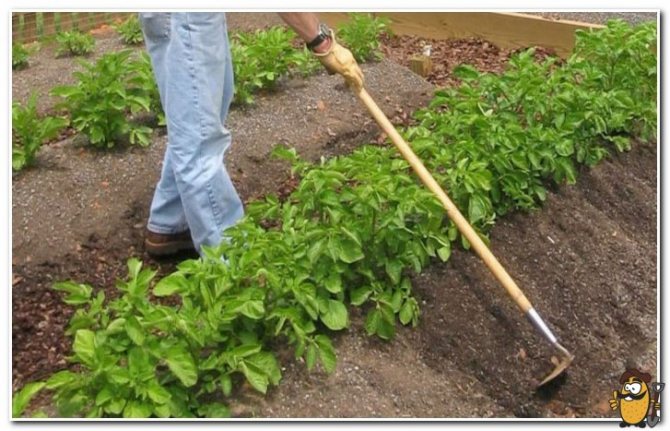

The Picasso variety gratefully responds to the application of organic and mineral fertilizers. For the entire growing period, the bushes are recommended to be fertilized three times. The first time - after the appearance of the first shoots, the second - immediately before the beginning of flowering, the third - during the opening of the petals. If everything is done on time, a bountiful harvest is guaranteed.
Pest control will be minimized if the planting material is treated with special preparations. They work for a long time, so not a single insect can covet the ground part of plants and tubers. If the ubiquitous Colorado beetles or their larvae nevertheless appeared on the leaves and stems, then an urgent need to spray the potatoes with remedies. It is worth etching even when at first glance there are few insects, otherwise they will multiply quickly and cause serious damage to plantings. In this case, you can not count on a good harvest.


Nuances of agricultural technology
As I said above, Picasso does not require any special care - the variety is really unpretentious, so that it gives a great harvest, it is enough to follow the following rules:
- Picasso needs regular weeding and loosening of the soil - this way the roots can receive much more oxygen and moisture, which will affect both the quantity and quality of the crop. But there is an important nuance - you can start these procedures only when the seedlings have strengthened at least up to 7-8 centimeters, otherwise the risk of damaging weak roots is too great.
- Surprisingly, the variety needs almost no watering, especially when it comes to regions where it rains relatively often. Picasso does well with rainwater, additional watering should be introduced only if a specific period of time is very hot and dry - in this case, one watering every ten days - two weeks will be enough.
- It will not be superfluous to apply fertilizers - Picasso loves them and takes them well. The ideal time for this comes three times per season - immediately after germination, immediately before and during flowering. Do not fertilize Picasso after flowering - this is a common mistake and can harm the fruit.
- The variety is relatively resistant to diseases that often affect potatoes. The Colorado potato beetle is not at all scary to him. But late blight can significantly spoil your nerves and crops, so periodically it is better to carry out preventive treatment of the bushes.
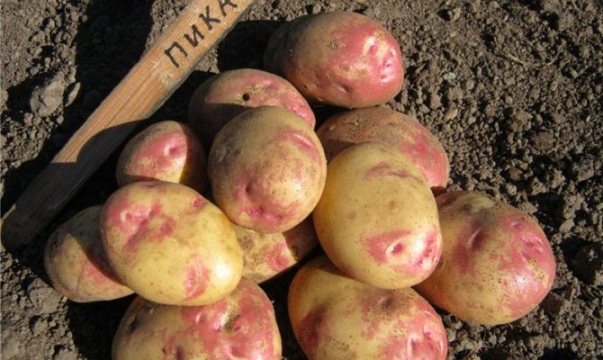

Collection and storage
I received the Picasso potato variety reviews from many gardeners and summer residents, and all thanks to its beautiful appearance and good keeping quality. To preserve the crop until the new season, you need to properly harvest it and prepare it for storage. The storage also requires preparation, but first things first.
Picasso is a representative of late-ripening varieties, so you should start harvesting no earlier than 120 days after planting. About a week before this event, it is advisable to remove the tops so that the tubers get stronger and can dry out faster. In private gardens, potatoes are dug out of the ground, usually with a pitchfork or a shovel. Wet tubers extracted from the soil must be dried right on the site under the sun. In half an hour, the peel will not have time to turn green, but it will dry out enough, and the remains of the soil will be easily cleaned from it.
The dried potatoes are carefully sorted out, sorted by size and transported to a shaded area. There she should stay for some time so that excess moisture evaporates from the surface of the skin. This will prevent rotting crops in the basement and cellar.
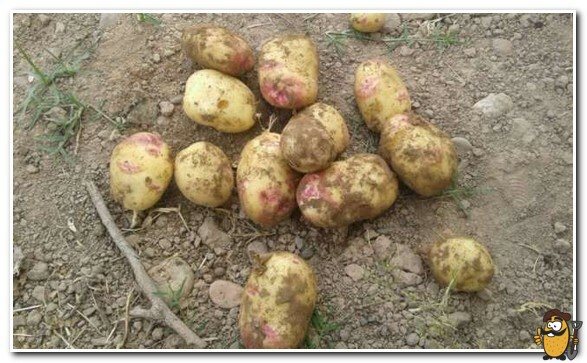

Before laying in storage, it is worthwhile to re-examine all tubers for damage. Rotten, cut and damaged specimens are immediately recycled. A high-quality part of the crop is placed in a cellar or basement in a special container. To do this, you can use boxes with holes, nylon mesh or bags made of natural materials.You need to pour potatoes so that the filled container can be easily carried and moved. Almost the entire harvest will remain until the end of spring, losses will amount to only 5-8%.
The Picasso variety is ideal for growing both in small areas and on large farmlands. Its tubers are beautiful both externally and internally. They can be used to prepare a variety of dishes that will be appreciated by all family members.
Testimonials
Vadim
I bought seeds at random and made the right decision - from one hundred square meters I collect about 40 kilograms of excellent potatoes. I planted more for myself and my family, but the harvests are so generous that I began to sell a little - either to neighbors or to colleagues at work. Picasso is a great variety that won't give you a hassle but will yield a great harvest.
Nataliya
The most important thing I will say about Picasso is to treat it regularly for late blight. Last year my harvest suffered from it very seriously and I still cannot put the bushes in order. In general, the culture is wonderful - tasty potatoes, which are well stored. I use it mainly for cooking - not frying it very much, it can break. I won't name any serious shortcomings - the variety is really good.
Kirill
I never thought that there really is a potato that Colorado beetles do not eat. It turned out there is. Picasso copes well with "potato" diseases, is unpretentious in care and is good in every sense. I planted it five or six years ago and since then I haven't even thought of planting potatoes - all the neighbors are asking me to sell this one too.

